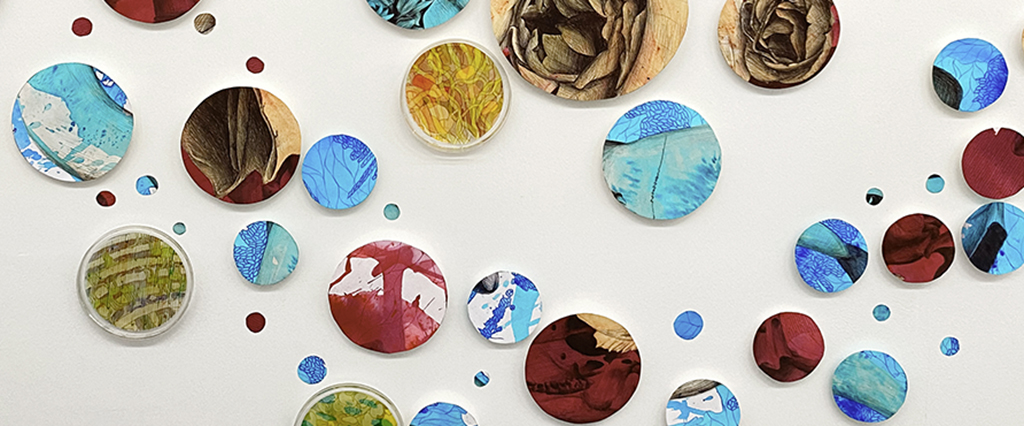
Art & Design

Why Study Art & Design at The Purbeck School?
The Art department at The Purbeck School allows students of all abilities and backgrounds the equal opportunity of accessing the Arts. We provide a learning environment which takes into consideration each students’ individual needs and inspires them to produce meaningful, skilful and diverse work.
The department is superbly equipped and offers specialist ceramics and photography facilities including a suite of computers and a darkroom, enabling students to sample a complete range of creative processes.
Our staff are comprised of highly skilled Art specialists and we deliver an exciting and challenging curriculum that reflects the interests of our learners and the ever-changing aesthetics of contemporary practice.
The Art department is very welcoming and supportive. Students have a range of extra-curricular opportunities including both art and photography clubs, working with visiting artists, specialist workshops, competitions and an annual arts celebration. All students are offered opportunities to take part in visits to local and national museums and galleries and we aim to run regular overseas study trips for 6th form students.

How Is Art & Design Taught?
- KS3 – Students are taught in mixed ability classes, for two hours every fortnight.
- KS4 – Students are taught in mixed ability classes for five hours each fortnight.
- KS5 – Students are taught by two specialist members of staff, for up to nine hours each fortnight. Students are also granted full access to the Art and Photography studio spaces during study periods to develop their work independently.

Rationale and Ambition for The Purbeck School Art & Design Curriculum:

- At each different key stage students explore a range of visual, tactile and sensory experiences to enable communication of ideas and meanings. They work with traditional and new media developing confidence, competence, imagination and creativity. At each level students are asked to consider how context, concept and visual or technical processes impact the art they see and make.
- The research and synthesis of artists’ work underpins Art & Design study. Our aim is for students to think and act as artists, craftspeople and designers, working creatively and intelligently in response to the world around them.
- At KS4 Students may opt to study OCR GCSE Art & Design: Fine Art (J171) and/or Art & Design: Photography (J173).
- At KS5 students who have previously studied either of the Art & Design courses may opt to continue to study either/both Fine Art or Photography A-Level. If they did not complete a creative GCSE course, they may still study at A-Level after submitting a personal portfolio for review with staff.
- OCR A-Level Art and Design: Fine Art (H601)course is dedicated towards building a skillset for students to expand upon in personalised projects. This skillset is comprised of both technical processes and idea development to ensure students become reflective practitioners and work like true artists. The areas of study are very broad and cover (but are not limited to) drawing, painting, printmaking, sculpture, installation, fine art photography and mixed media. Students complete two sketchbook portfolios with the second being an externally set task directly from OCR exam board.
- OCR A-Level Art and Design: Photography (H603)course is dedicated towards building a skillset for students to expand upon in personalised projects. This skillset is comprised of both technical processes and idea development to ensure students become reflective practitioners and work like true artists. The areas of study are very broad and cover (but are not limited to) traditional and experimental cameraless image making, building cameras, shooting on film, digital photography, studio lighting, documentary photography, printing, zine making, videography, animation and installation work. Students complete two sketchbook portfolios with the second being an externally set task directly from OCR exam board.
- If you enjoy being creative, want to increase your practical skills and improve your analytical, communication and research abilities, Art and Design is a great choice at both GCSE and A-Level. The skills you gain make it a great complement to other subjects. Art & Design is a way of truly seeing and making sense of the world around you. It is a way to learn more about yourself and share your opinions, beliefs and ambitions with like-minded creatives. Both Fine Art and Photography routes at GCSE and A-Level offer a breadth of study that make them challenging courses for motivated and creative individuals and open the door to a wealth of career opportunities in the visual arts and creative industries.
- If you don’t want to take your Art & Design studies any further post-18, the transferable skills you gain will still be highly valuable and sought after by employers and higher education providers. You’ll develop problem solving, creative thinking, investigation, research/critical analysis, communication and teamwork skills, and gain the ability to develop, refine and present ideas.
Key Concepts:
(AO’s indicate the assessment objectives as outlined by OCR’s mark schemes in the course links below)
- To develop, review and refine ideas. (AO1)
- To analyse contextual and other sources to inform investigations. (AO1)
- To explore and select appropriate resources, media, materials, techniques and processes (AO2)
- To record your ideas, observations and insights, through artwork and written work. (AO3)
- To present personal and meaningful responses. (AO4)
Useful Links:
- OCR GCSE Art and Design: Fine Art (J171) https://www.ocr.org.uk/Images/220463-specification-accredited-gcse-art-and-design-j170-J176.pdf
- OCR GCSE Art and Design: Photography (J173) https://www.ocr.org.uk/Images/220463-specification-accredited-gcse-art-and-design-j170-J176.pdf
- OCR A-Level Art and Design: Fine Art (H601) https://www.ocr.org.uk/Images/170210-specification-accredited-a-level-gce-art-and-design-h600-h606.pdf
- OCR A-Level Art and Design: Photography (H603) https://www.ocr.org.uk/Images/170210-specification-accredited-a-level-gce-art-and-design-h600-h606.pdf
- @Purbeckarts on Instagram https://www.instagram.com/purbeckarts/?hl=en













